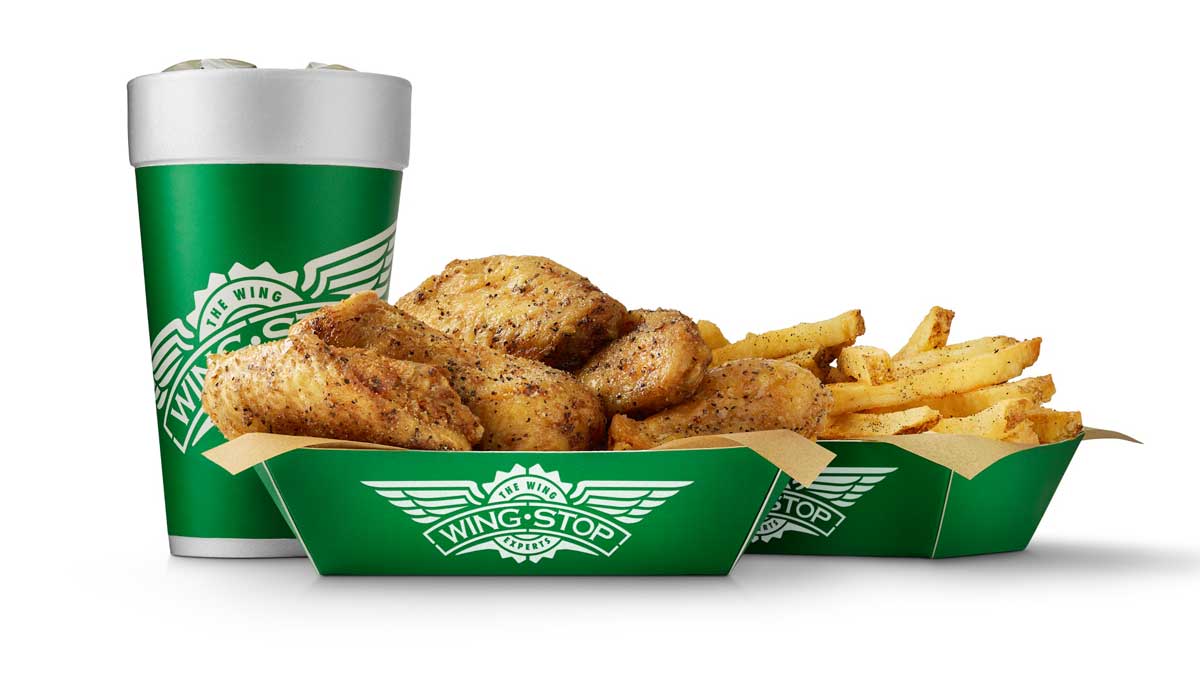After ramping up the digital side of the business, Wingstop sees its investments paying off, president and chief executive officer Charlie Morrison said during a May 7 conference call. Wingstop is investing in areas across the company, but the brand is leaning into TV advertising to grow awareness as new locations open.
A 3-4 percent increase in gross sales for fiscal year 2019 combined with a 15.8 percent boost in systemwide sales allowed for an increase in the contribution rate to the national ad fund, the company said. This translated to an additional 1 percent of sales dedicated to the national advertising fund to fuel the TV strategy.
“We wanted to see the momentum really kick in from the new advertising campaign to be able to maintain our confidence in making further investments down the road,” Morrison said. “As you look intra-quarter, we definitely saw the momentum of the business pick up through March and we maintained our focus on these investments as the right thing to do for the business for the long haul.”
Morrison did not go into specifics, but explained after the March rollout of the new advertisements traffic picked up across the system. He said Wingstop would be able to see the real impact of the new ads as metrics begin to show in Q2.
The wing chain’s performance remained positive during the first quarter, marking 16 consecutive periods of gains. Domestic same-store sales lifted 7.1 percent, which comes on top of a 9.5 percent hike from Q1 of 2018. This growth translated to total revenue of $48.1 million for the first quarter compared to $37.4 million this quarter last year.
Other investments will be made to help Wingstop reach its goal to digitize every transaction and simplify the customer experience.
Digital surpassed 30 percent of total sales during the first quarter. With a new app and website that launched in January, guest visits to Wingstop’s digital properties rose 3 percent as well.
New technology is being introduced systemwide in the front and back of house.
Currently, the chain is testing ordering and payment kiosks to help cut down lines. QR-coded pick-up lockers are also in pilot to see how that helps the carryout process for guests. In theory, the new technology will enhance kitchen speeds and allow more throughput at each location.
In the kitchen, Wingstop is taking lessons from international stores. The new London restaurant that opened earlier this year has an average ticket time of 6–8 minutes compared to 16–21 minutes in the U.S. Testing is still in its infancy, but Morrison said the company is using these improved processes and trying to get ticket times down to 10 minutes or less.
“We certainly will not sacrifice quality as a means to achieve this milestone, but we do believe that there are some advanced cooking techniques and platforms that could help us with that,” Morrison said. “We are encouraged by what we’ve seen in the early phases of this test.”
“We believe we will drive even higher average-unit volumes and continue to drive Wingstop as a destination for franchise partners,” he added.
The underlying goal for these investments is to boost long-term growth. As leadership mentioned on previous calls, it expects 10 percent systemwide unit growth in 2019 and is on track to meet that target. Morrison added the company averaged a 1 percent or less closure rate over the past few years.
Morrison said the company plans to grow to six times its size. This expansion will be achieved through the investments it is currently making and the growth of franchise partners. Franchisees, he said, are fueled by almost 50 percent returns on average-unit volumes of $1.1 million.
“We’ve put a lot on to the organization, and we want to make sure that we maximize the benefit of each of these investments,” Morrison said.
At the end of Q1, Wingstop’s global footprint extended to 1,273 restaurants with the addition of 21 net new restaurants. Future international development will bring the brand into France and throughout Central America over the next few months.
Expanding delivery
Wingstop is taking a slow approach to rolling out delivery, but off-premises is definitely gaining momentum. As larger markets come online, Morrison said, the company hit the 50 percent mark of restaurants being delivery capable. By the end of the year, he expects 80 percent of the system to be covered.
Delivery testing with DoorDash continues. Some brand specific advertising from the third-party company helped boost orders, but at the end of the day the order show up at the restaurant in the same way. Morrison said the key to making delivery a success will come down to how it can maximize the number of orders coming through the kitchen and handle them efficiently.
“As delivery takes hold and we gain more momentum and then we start to accelerate the rollout throughout the balance of the year certainly it should be beneficial to the top line,” Morrison said.
Even though Wingstop is expanding advertising, the company doesn’t expect to dedicate TV spots to delivery-focused messaging. When delivery is available across more locations, the company will look to add that type of messaging. Morrison expects that to happen sometime in 2020.









